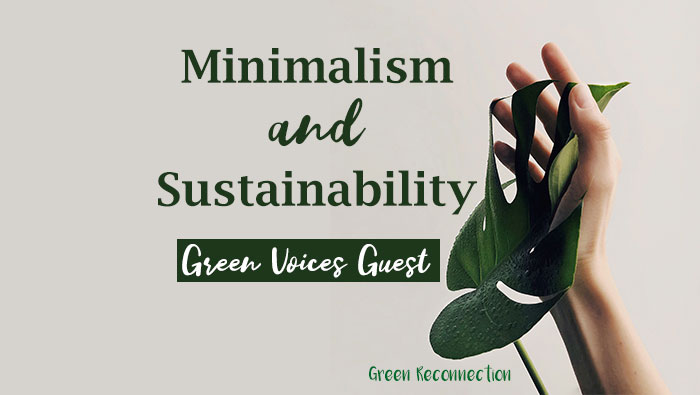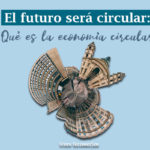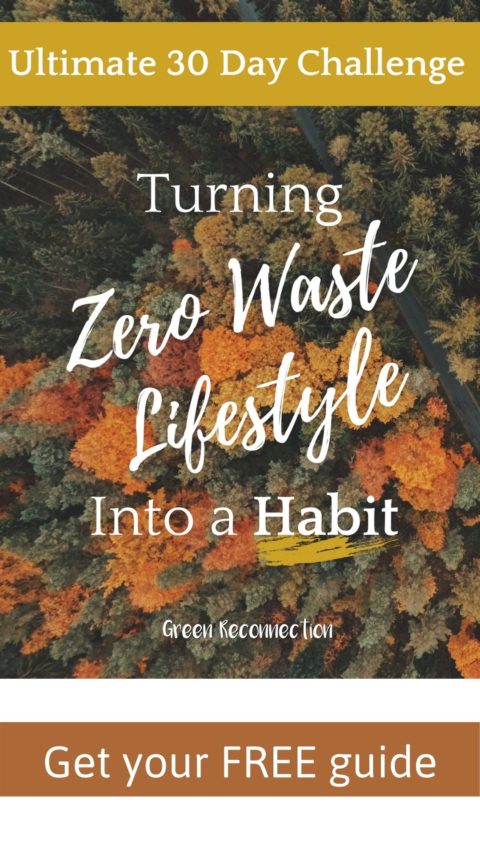Green Reconnection publishes pieces by outside contributors on the Green Voices page. These publications and their opinions don’t necessarily reflect our own. If you want to be a contributor, you can apply on the Green Voices page. We partner with companies that offer products that help our readers on their journey to a sustainable lifestyle. If you purchase through our affiliate links, we get a commission at no additional cost to you! Read our disclosure for more info.
Guest author: Youmna Rab is the author and blogger at Sustainably-Yours.com.

How minimalism and sustainability are related: Have you ever bought an item and been so excited to use it, only to forget about it a week later? That’s what we call instant gratification, the short-lived happiness you feel when you buy something new. This high is so easy to get that it has led North America to become the throw-away, consumerist culture it is today. Unfortunately, it’s having long-lasting effects on our happiness and our planet. And they are not good ones.
Table of Contents
Consumerism is a disease. Minimalism and sustainability are the cure.
Minimalism and sustainability are lifestyles that have become more common in past years. They both combat this throw-away culture. Although the concepts are different, they are very similar in many ways.
Simply put, minimalism is a lifestyle in which you focus less on materialism and more on building a meaningful life. Things like having more time, deeper relationships and better health are more important than the short-lived gratification we gain from buying stuff.
By getting rid of the physical clutter in your life, you not only free yourself but you help the planet too.
Sustainability is the concept that we must only take what we need and not harm our planet. We want to leave Earth in good conditions for future generations.
Consumerism has led to an increase in disposable products that we throw away daily. Sustainability fights this throw-away culture and living a lifestyle that helps the environment.
How are they related?
Both concepts have a lot in common. Sustainability requires you to buy less. Whereas the minimalist lifestyle inspires you to buy less.
Both of these lifestyles result in you reducing the amount of stuff you buy. Even if it’s for different reasons. But this key idea of not buying stuff results in a lot of benefits.
Meaningful shopping
Both of these lifestyles focus on only purchasing meaningful items that will last. Spending $40 on a good quality t-shirt that will last 10 years is better than buying a $10 t-shirt that you will have to replace in one year.
Help the planet
Sustainability asks that everything you do is to help the planet. Whether it’s switching to reusable alternatives or consuming less. Minimalism doesn’t necessarily ask that you help the planet but the lifestyle changes you make help the environment. By buying less stuff, you prevent thousands of pounds of plastic from going to the landfill for example.
Save money
Since both lifestyles ask that you invest in only meaningful items that will last, you save lots of money along the way. You no longer spend money on products that you will throw away after a few uses. Instead, you focus on buying items that you love and that you can reuse for years.
Satisfaction
You are no longer looking for that short-term gratification that comes with buying new things. Both these lifestyles ask you to think before you make the purchase. Does it help the environment? Does it make me genuinely happy? Will it last? The answers to these questions matter more than the short-lasting instant gratification spending money.
Only buy what matters
No more impulse-buying the new gadget while waiting in line. No more random purchases thinking you might wear the dress eventually. Now, you only spend money when you need to. Of course you treat yourself to the things that you want, but you no longer want things that don’t bring you joy.
How to get started with these lifestyles
Starting a minimalist or sustainable lifestyle isn’t hard. Here are a few ways you can start making a change today:
Clean out your closet
Fast fashion is a huge industry and we’ve all spent money in it. Go into your closet, see what clothes you haven’t worn in the last year. Give them away to friends, sell them or donate them. When you are looking to buy new clothes, shop from stores that have ethical practices. Make sure the clothes are made from good quality material so that your clothes last longer.
For an even more minimalist lifestyle, look into creating a capsule wardrobe. One great thing about minimalism is that its style will never go out of fashion. Basics will always be a crucial part of any wardrobe so you’ll always be in style.

Do an audit of your home
Look around your home and see what items you have that you haven’t used in a long time. Extra pens, scattered paper, old jewellery. Find ways to repurpose them or give them away. Try not throwing the items in the trash so that you avoid sending them to the landfill unless you have no other option. By getting rid of the clutter and finding ways to repurpose it, you are clearing space for your minimalist lifestyle while also giving these items new life for a sustainable lifestyle.
Repair
Instead of throwing things out when they break or tear, find ways to repair them. Learn basic sewing skills to sew a button or fix a tear. Take your shoes to a cobbler to fix them. When your phone has an issue, get it checked instead of buying a new one right away.
Focus on your health
This might seem like an odd one but hear me out. Minimalism wants you to live a healthy lifestyle. If you live a healthy lifestyle, you’re actually helping the planet! Think of all the fast food bags, snack packaging and soda cans that come with an unhealthy lifestyle. Whereas a healthy lifestyle involves eating whole foods that are generally unprocessed and come from nature. Prioritizing a healthy lifestyle is a great way to start a both minimalist and sustainable lifestyle.
Change your mindset
When you think of a sustainable or minimalist lifestyle, you might have negative views towards it. These lifestyles require you to give up something that makes you happy – instant gratification.
Instead of thinking of it as a loss, change your view and reprioritize your values. When you think with this minimalist mindset – one where you prioritize yourself over objects – you are able to live a more meaningful life. When you think with a sustainable mindset – one where you prioritize the health of the planet – you’ll be doing your part to create a better world for the people of the future.
Over time, it’ll get easier and you’ll find that you’re happier with less stuff.
So as you can see, minimalism and sustainability go hand in hand. They both lead to deeper connections with ourselves, our loved ones and our planet. Whether you choose minimalism to free yourself or you choose sustainability for your love for the planet, you’re making a difference. If everyone in the world chooses either of these lifestyles instead of consumerism, we will be able to create a better planet and better life for everyone.





